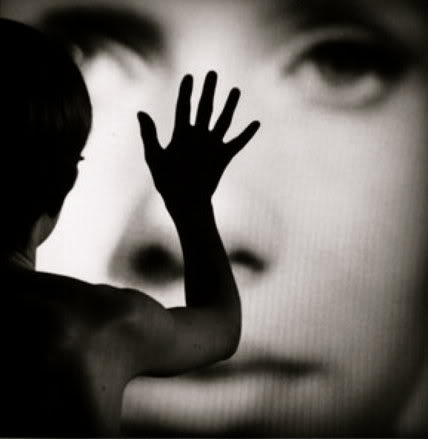|
“Open your eyes for a moment,” says my TRE (Tension/Trauma Release Exercises) Provider during one of our sessions. As a yoga practitioner and teacher, I’m so used to closing my eyes when I practice. “Experiment to see if you feel more present with your eyes open or closed,” she explains. I try. I realize that when I have my eyes open, I can both feel my body and be aware of what goes on in my surroundings. This simple remark sparks my curiosity. “Some people need to close their eyes to be able to feel what is going on in their body. Others close their eyes and their mind drifts off into LaLaLand. They dissociate from reality,” she explains. It never occurred to me in all those years of teaching yoga that I might lead people into dissociation by asking them to close their eyes!
The issue with dissociation is that we are not fully in touch with life happening in the present. Those who experience more severe dissociation might feel numb, disconnected from emotions, a kind of internal “death”. The issue with numbness is that we cannot selectively numb one emotion. So although it may be a relief to numb out an overwhelming emotion of rage or panic, it also means that we are unable to feel joy, happiness and peace. We have to remember that dissociation in the case of trauma can be useful. After all, it is an instinctual response meant to protect us when something overwhelming happens. In some cases, it saves our life. We don’t have to experience trauma to dissociate. Most of us experience a mild form of dissociation on a daily basis. We dissociate mildly when we daydream or detach from our surroundings. When I drive from my house to work on “automatic pilot”, I’m actually disconnected from reality. When I am going down a rabbit hole on my phone instead of being present to my children playing around me, I am dissociated. It happens when I am sitting in meditation and my mind thinks about what I am going to have for lunch. It also happens when I eat chocolate at night in front of a stupid movie to cover up my sense of emotional emptiness.
body, and thus liberated from the awful cycle of birth, decay, death, and rebirth”. (Jack Hawleys translation in The Bhagavad Gita, a walkthrough for Westerners). The three gunas -sattva, rajas and tamas- are the three main qualities present in nature. In essence, this verse encourages yogis to transcend the realm of this material world to merge with the Divine or Ultimate dimension. In the Vedic period, around 1500 BCE and the next few centuries, ascetics saw the body as impure and did not attend to their physical needs. They practiced extreme forms of fasting, not sleeping for months, barely moving sometimes for years at a time. Patanjali’s controversial Yoga Sutra 91 (Chapter 2, verse 40): “Through purity (he gains) distance towards his own limbs (and also) (the desire for) non-contamination by others.” Those are just examples of how ancient yogis wanted to transcend reality, including their suffering. I wonder if somehow they practiced to consciously dissociate. The Buddha was one of the first ones to criticize extreme forms of asceticism by promoting “the Middle Path” and introducing the concept of mindfulness. The arrival of Tantra also revolutionized spiritual practices from the 9th century onwards. Everything in this world was seen as an expression of the Divine. We need to take care of our body if we ever want to become even partly enlightened. The practice of mindfulness is spreading like bushfire in all spheres of society, which shows the massive change in the last few decades. So how can we transform our habit of checking out and therefore missing out on life? My practice is to catch myself as soon as possible when I “leave” and to gently bring myself back. I then ask myself “What am I unwilling to feel?”, following Tara Brach’s advice, a wonderful dharma teacher from the US. I notice that often my mind runs off because what I am feeling is uncomfortable. If what I am feeling is overwhelming, mild dissociation or distraction might be exactly what I need in the short term. But I know that in the long run, if I want to digest the yucky feeling that is there, I need to fully feel what is there. I stay kind to myself, not forcing myself to feel what I am not able to hold comfortably. Like Peggy Rowe, another favorite dharma teachers of mine, once told me: “If it’s too strong to stay with, touch your suffering with a feather. And then back off.”
1 Comment
|
Pranaya Yoga TeamLaurence Gilliot, Gernot Huber, Rosemary Bolivar and Lek Kittikunaudul share their insights and knowledge on Yoga Archives
April 2019
Categories |





 RSS Feed
RSS Feed
